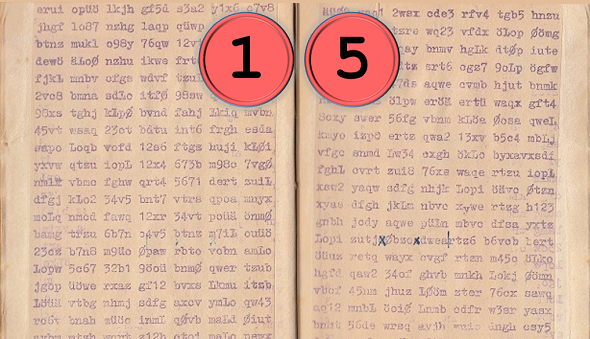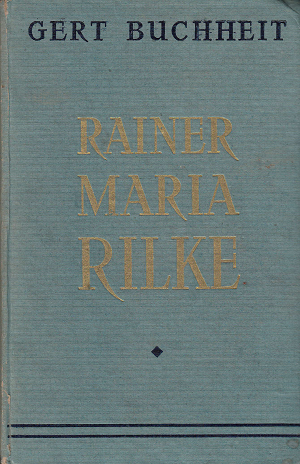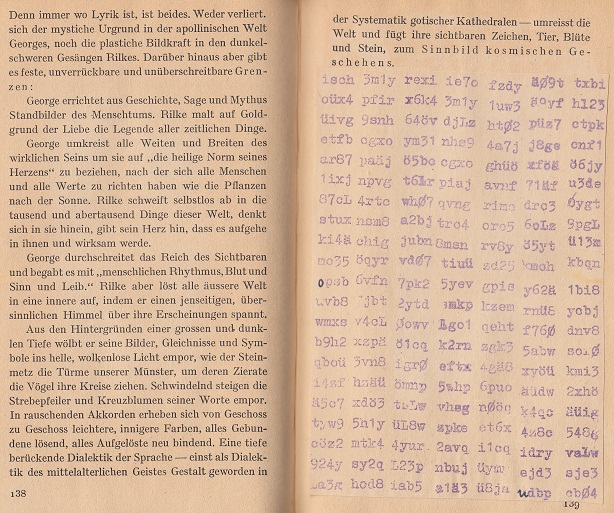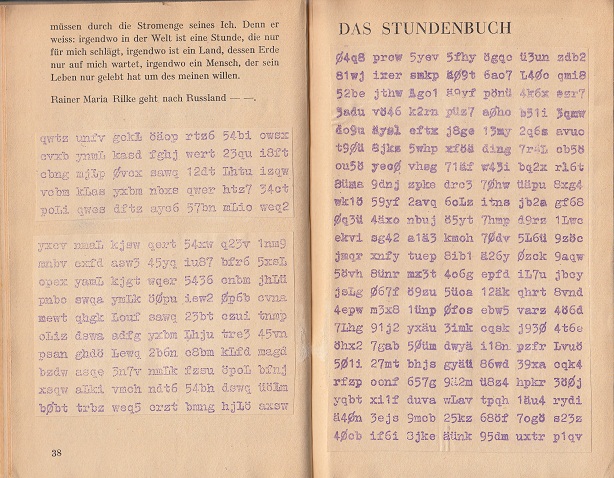During the Second World War, an unknown person stuck sheets with seemingly random letter sequences into a book. The meaning of these letters is unknown.
Click here for the complete top 50 list
Two years ago, blog reader Dr. Karsten Hansky provided me with an extremely interesting encryption puzzle. In a copy of the book Rainer Maria Rilke by Gert Buchheit …
… somebody has pasted sheets filled with seemingly meaningless typed letter sequences. Virtually every free space in the book is used for this purpose, but no book text has been pasted over. The first page looks like this (scans of all pages are available here):
Apparently, the letters were printed with a hectograph (until about 1990 hectography was the cheapest printing method). The book Rainer Maria Rilke by Gert Buchheit was originally published in 1928. The edition we deal with here is a reprint from 1942. According to the page shown above, it is a “unique special edition published by the [German] headquarters of the war front bookstores in Paris.”
I have blogged about this mystery a few times before (in German). So far, nobody has found an explanation for these letter sequences. In my opinion, there are three plausible explanations.
1) An encrypted message?
Of course, the Rilke cryptogram could be an encrypted message (otherwise it would not be interesting for this blog).
Pros: The Rilke cryptogram consists of four-letter groups. This is the way the German navy noted radio messages in the Second World War.
Cons : The Rilke cryptogram contains numerous patterns, like letters in the same order as on the keyboard, repetitions, and symmetries. In addition, there are almost no letter duplications, and nearly every letter group contains four different letters. All this would be very unusual for an encrypted text.
2) A key?
Is the Rilke cryptogram a cryptographic key that was meant to be used for a one-time pad or another cipher?
Pros: It is certainly possible to use these letters as a key. In addition, hiding a key (in this case in a book) makes sense.
Cons: The Rilke cryptogram was produced with a hectograph. This technique was rarely used for keys, as hectography only makes sense, if several copies of the original sheet are required. In addition, I have never seen a one time pad key consisting of letters and numbers, including German umlauts.
3) Exercise material?
Is the Rilke cryptogram just a meaningless sequence of letters and numbers made for soldiers to practice the Morse code or another writing or transmission technique?
Pros: Hectography was a very common technique for printing exercise sheets for students. The strange repetitions and patterns would not bother, if the letters and numbers were only practicing material. It is easy to imagine that a soldier taking part in Morse lessons would have pasted an exercise sheet into an unobtrusive book to hide it from his fellows (it was quite common that soldiers had to keep their activities secret even from their fellow soldiers).
Cons: It is unusual that a text made for practicing the Morse code or something similar consists of meaningless gibberish. Why not use a standard text? In addition, the Rilke cryptogram contains the German letters “ä”, “ö” and “ü”. There are Morse equivalents of these characters, but they are rarely used in the military.
In my view, the Rilke cryptogram is neither a ciphertext nor a key. There is simply no encryption method I have ever encountered that uses keys like this one or produces ciphertexts like this one. In addition, I have never seen hectography being used for a key or a ciphertext.
So, in the end, the exercise text hypothesis is the one I like best. Using a hectograph for producing excercise sheets was very common, even in my school days in the 1980s. I can easily imagine that a WW2 soldier, who had to learn the Morse code or some other writing technique, pasted an excercise sheet into a book he carried with him. All this makes sense, but, of course, there no proof for this hypothesis. Does a reader have a better explanation? Any suggestions are welcome.
Follow @KlausSchmeh
Further reading: My visit at the Cheltenham Listening Stones
Linkedin: https://www.linkedin.com/groups/13501820
Facebook: https://www.facebook.com/groups/763282653806483/







Kommentare (10)